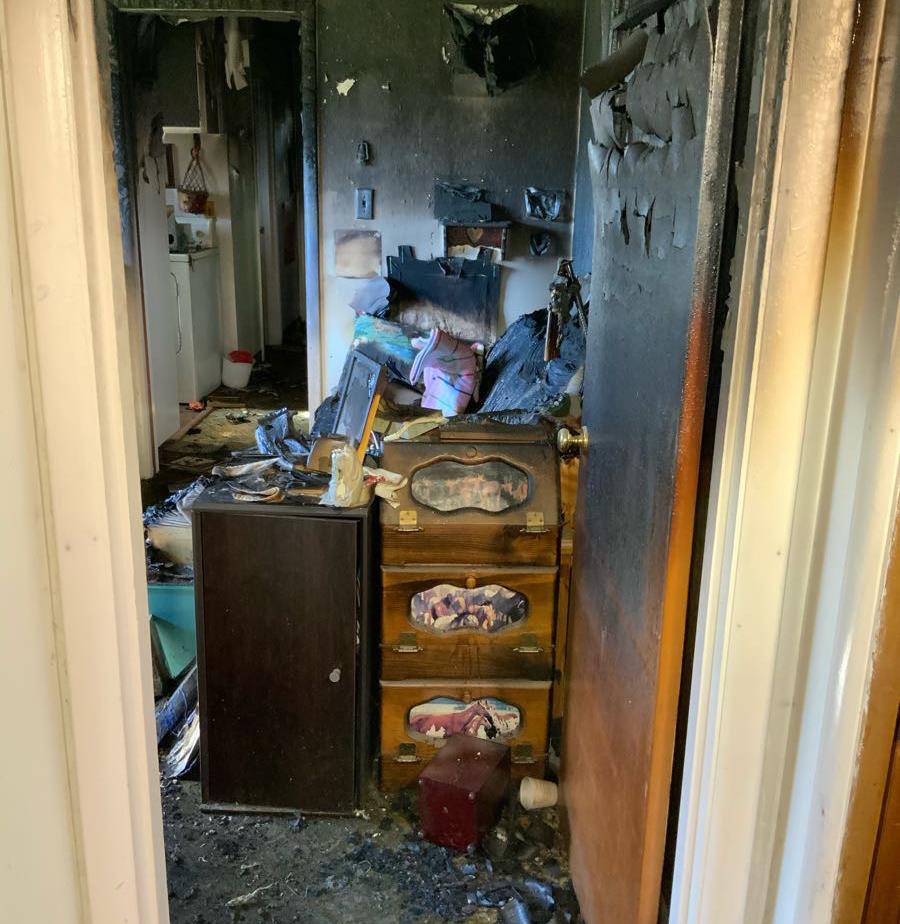Fire Damage Restoration
10/5/2020 (Permalink)
Count on SERVPRO’s Highly Qualified Team of Trained Managers and Technicians to Clean Up Fire Damage in Your Twin Falls Home Using Best Practices
The soiling deposited on surfaces of your Twin Falls dwelling and infiltrating into furnishings, household goods, and personal possessions after a fire is unlike ordinary dirt and grime. In addition to containing toxic compounds created during combustion, the soot can adhere tightly to walls, ceilings, floors, appliances, and more. Trying to remove it with conventional products and without specific training can worsen the damage and expose the individual doing the cleaning to hazardous substances.
Why Are Fire Residues Challenging to Clean?
Before professional restorers attempt to clean up fire damage in your Twin Falls residence, they have some targeted assessments to complete. Before they can begin on residue evaluation, any water damage from firefighting efforts must be mitigated and remediated. As some members of our crew operate the pumps, extractors, air movers, and dehumidifiers to remove fluids and moisture from the structure, project managers begin the painstaking task of looking closely at the types of soot found and planning for its safe abatement.
How Do We Handle Dry Soot?
This type of residue is left behind after paper, and wood or cellulose-based items fuel the fire. The resulting blaze is hot and fast, well-oxygenated, and deposits a loose, ashy residue. Rubbing and using water or oil-based cleaners smear and grind this kind of soot into the surfaces, damaging and staining them. SERVPRO employees use the following to clear this kind of soiling:
• Feather dusters
• Dry (chemical) sponges
• Dry cloths and towels
• Brushes of various sizes and stiffness depending on circumstances
• Pressurized air
• HEPA-filtered vacuums
How Do We Handle Wet Soot?
When electrical boxes and cords short and burn, rubber and plastics melt, and damp or tightly packed padding or fabrics provide materials for the flames, smoldering occurs. The oxygen level is limited, and the temperature of the burn lower. Soot from this kind of scenario is thick and sticky. Our Institute of Inspection Cleaning and Restoration Certification (IICRC)-trained crews approach this residue by:
• Spray and wipe techniques, with the spray cleaner matched to the type of residue (water or oil-based, dependent on our skilled assessment)
• Foam cleaning for fabric and upholstery that cannot be submerged or washed
• Immersion tubs and ultrasonic machines for loose, non-porous objects
• Industrial laundry machines and dry cleaning for fabrics and window treatments
How Do We Handle Protein-Based Soot?
Many fires start in the kitchen, and the residues produced when food, oils, and grease are overheated, or flame up, are particularly tricky to find and remove. The residue is made up of the dehydrated protein in various food products. It forms a thin, nearly transparent film on surfaces, including contents and building materials far from the original fire site. It adheres very tightly and has significant amounts of oil in its composition. We need to:
• Search the entire home for evidence of this soot as it is incredibly malodorous and must be removed to avoid lingering smells
• Pretest the surfaces affected because of the aggressive methods we might need to employ
• Use solvents and abrasive techniques to loosen the varnish-like coating
What Do We Consider While Evaluating the Surfaces Involved?
The soot nearly always has a cleaning product, additives, and approaches that eventually break the bond between the residue and the surface. Not all surfaces can endure the efforts needed without adaptation. For examples, care must be taken:
• When a wood-product surface is covered in a thin veneer that might not hold up to vigorous scrubbing with an abrasive tool or cleaning product
• When a surface is porous because it is risky to saturate or soak it with cleaning products
• When a surface might have an adverse chemical reaction to a particular cleaning product or additive
What Are Other Safeguards Required During Fire Damage Cleanup?
Because of the toxic substances coating, every surface, and the potential hazards of some of the cleaning products used, personal protective equipment (PPE) is nearly always a requirement for our crew members. To shield you and your family from the fumes and toxins, we often set up a containment area using 1.6 mil polyethylene. A negative pressure air scrubbing system helps by trapping airborne particulates in HEPA filters and venting to the outside.
The care taken by SERVPRO of Twin Falls & Jerome Counties to match residues with appropriate cleaning products and techniques results in the best outcome for our residential customers. Call us at (208) 735-1447 to learn how we make it “Like it never even happened.”






 24/7 Emergency Service
24/7 Emergency Service